
Story/photos updated
After years of construction, the first of 18 primary flight mirrors has been installed onto NASA’s James Webb Space Telescope (JWST) at the agency’s Goddard Space Flight Center in Greenbelt, Maryland, signifying the start of the final assembly phase for the mammoth observatory that will eventually become the most powerful telescope ever sent to space.
The milestone first mirror installation was achieved this week just ahead of the Thanksgiving holiday as the engineering team, working inside the massive clean room at NASA Goddard, used a robotic arm to precisely lift and lower the gold coated mirror into place on the observatory’s critical mirror holding backplane assembly.
Each of the 18 hexagonal-shaped primary mirror segments measures just over 4.2 feet (1.3 meters) across and weighs approximately 88 pounds (40 kilograms). In space, the individual mirrors will unfold into several sections and work together as one large mirror, unprecedented in size and light gathering capability.
“This fall we will start installing every mirror,” said Sandra Irish, JWST lead structural engineer during a recent interview with Universe Today at the NASA Goddard clean room facility.
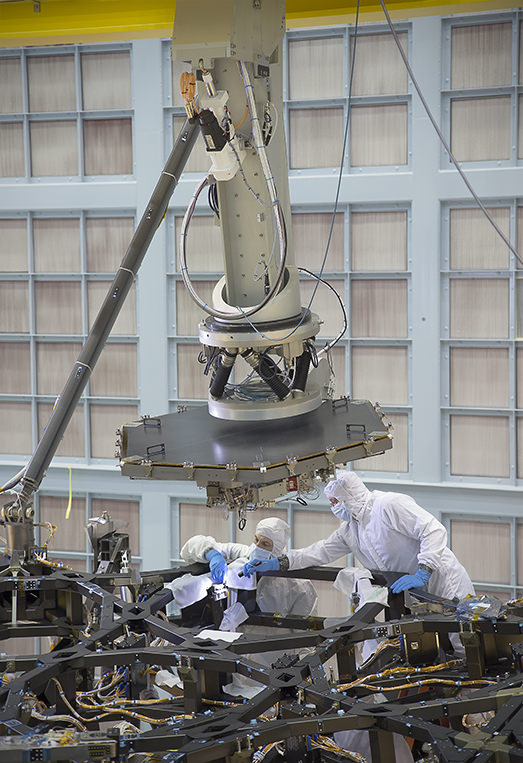
To complete the entire mirror installation process onto the backplane assembly will take several months and continue into early 2016. The flight structure and backplane assembly serve as the $8.6 Billion Webb telescopes backbone.
“Then next April 2016 we will install the ISIM science module inside the backplane structure,” Irish elaborated.
“The ISIM mounts all four of the telescopes science instruments. So the mirrors go on first, then the ISIM gets installed and then it will really be the telescope structure.” ISIM carries some 7,500 pounds (2400 kg) of telescope optics and instruments.
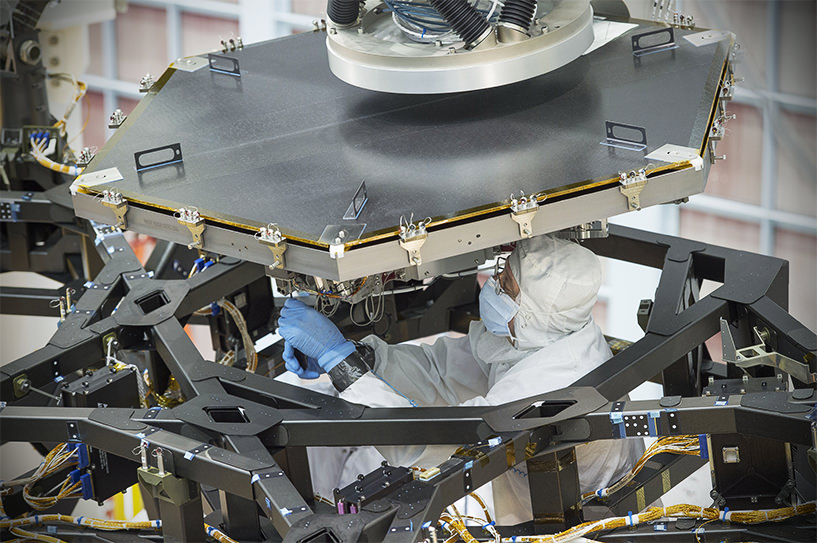
The purpose of JWST’s backplane assembly is to hold the telescopes 18 segment, 21.3-foot (6.5-meter) diameter primary mirror nearly motionless while floating in the utterly frigid space environment, thereby enabling the observatory to peer out into deep space for precise science gathering measurements never before possible.
“After a tremendous amount of work by an incredibly dedicated team across the country, it is very exciting to start the primary mirror segment installation process” said Lee Feinberg, James Webb Space Telescope optical telescope element manager at Goddard, in a statement.
“This starts the final assembly phase of the telescope.”
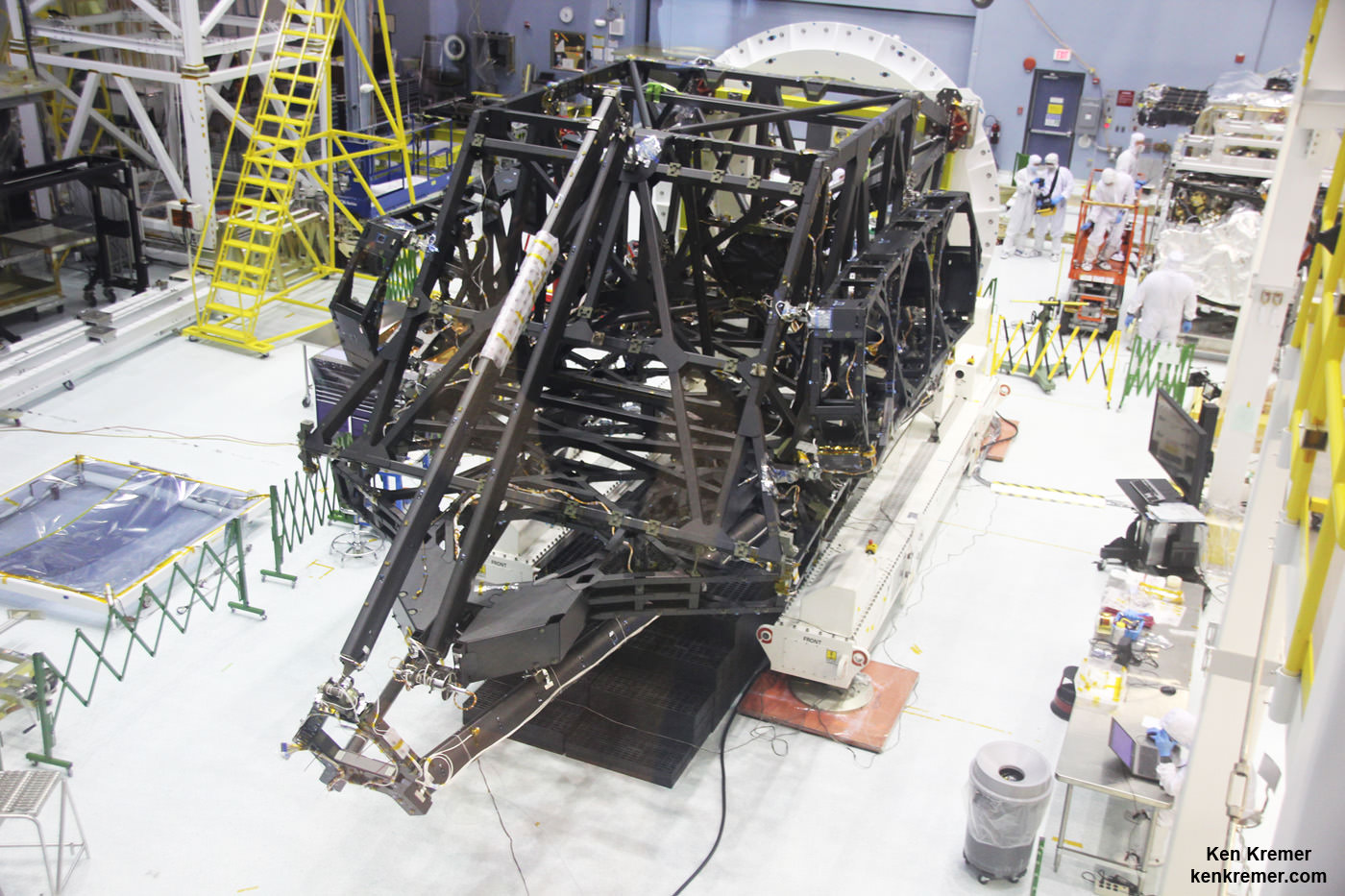
JWST is the successor to NASA’s 25 year old Hubble Space Telescope.
Webb is designed to look at the first light of the Universe and will be able to peer back in time to when the first stars and first galaxies were forming.
“The James Webb Space Telescope will be the premier astronomical observatory of the next decade,” said John Grunsfeld, astronaut and associate administrator of the Science Mission Directorate at NASA Headquarters in Washington.
“This first-mirror installation milestone symbolizes all the new and specialized technology that was developed to enable the observatory to study the first stars and galaxies, examine the formation stellar systems and planetary formation, provide answers to the evolution of our own solar system, and make the next big steps in the search for life beyond Earth on exoplanets.”
The actual flight mirror backplane is comprised of three segments – the main central segment and a pair of outer wing-like parts holding three mirrors each. They will be unfolded from the stowed-for-launch configuration to the “deployed” configuration to carry out the mirror installation. Then be folded back over into launch configuration for eventual placement inside the payload fairing of the Ariane V ECA booster rocket.
The telescope will launch from the Guiana Space Center in Kourou, French Guiana in 2018.
The telescopes primary and secondary flight mirrors had previously arrived at Goddard and the teams had practiced the installation using flight spares and engineering units.
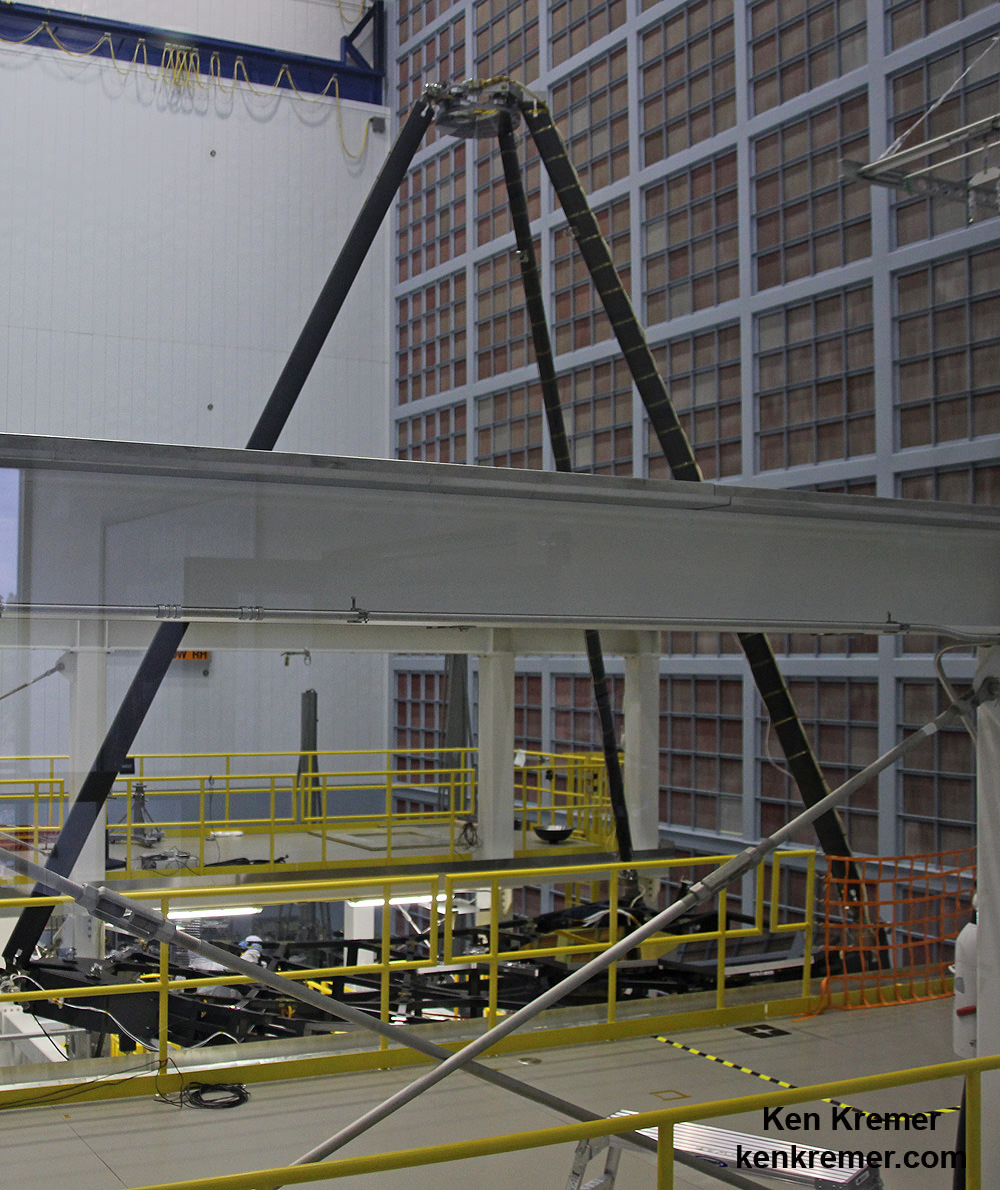
The mirrors must remained precisely aligned and nearly motionless in order for JWST to successfully carry out science investigations. While operating at extraordinarily cold temperatures between -406 and -343 degrees Fahrenheit the backplane must not move more than 38 nanometers, approximately 1/1,000 the diameter of a human hair.
To account for the tiniest of errors and enhance science, each of the primary mirrors is equipped with actuators for minute adjustments.
“There have many significant achievements for Webb over the past year, but the installation of the first flight mirror is special,” said Bill Ochs, James Webb Space Telescope project manager. “This installation not only represents another step towards the magnificent discoveries to come from Webb, but also the culmination of many years of effort by an outstanding dedicated team of engineers and scientists.”
So its 1 down and 17 mirrors to go.
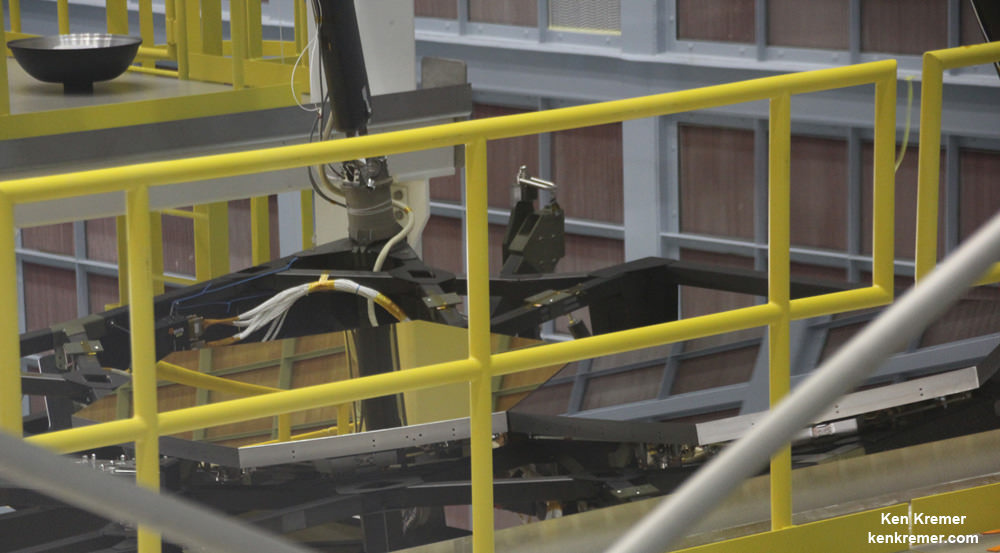
The Webb Telescope is a joint international collaborative project between NASA, the European Space Agency (ESA) and the Canadian Space Agency (CSA).
NASA has overall responsibility and Northrop Grumman is the prime contractor for JWST.
Watch for more on JWST construction and mirror installation.
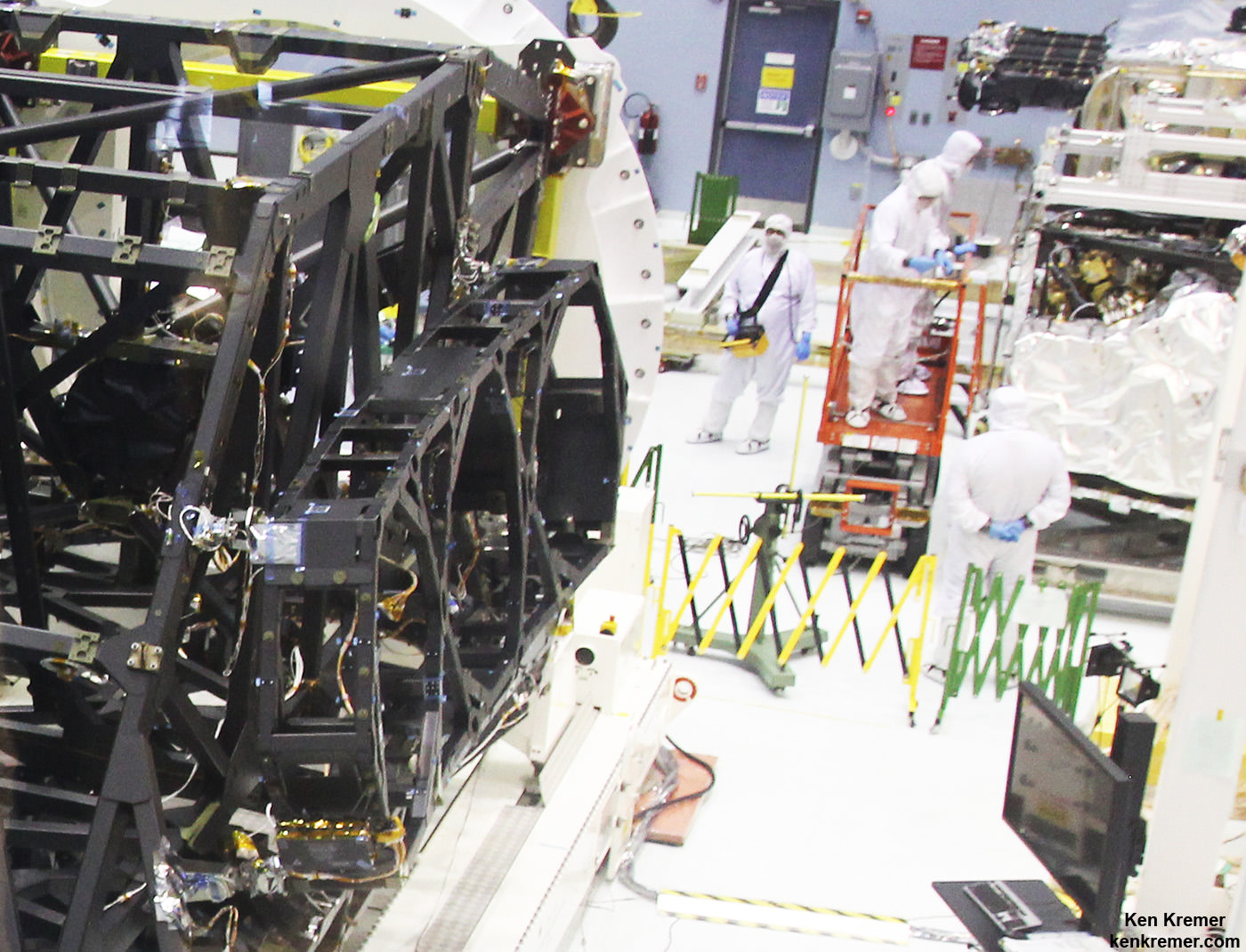
Stay tuned here for Ken’s continuing Earth and Planetary science and human spaceflight news.

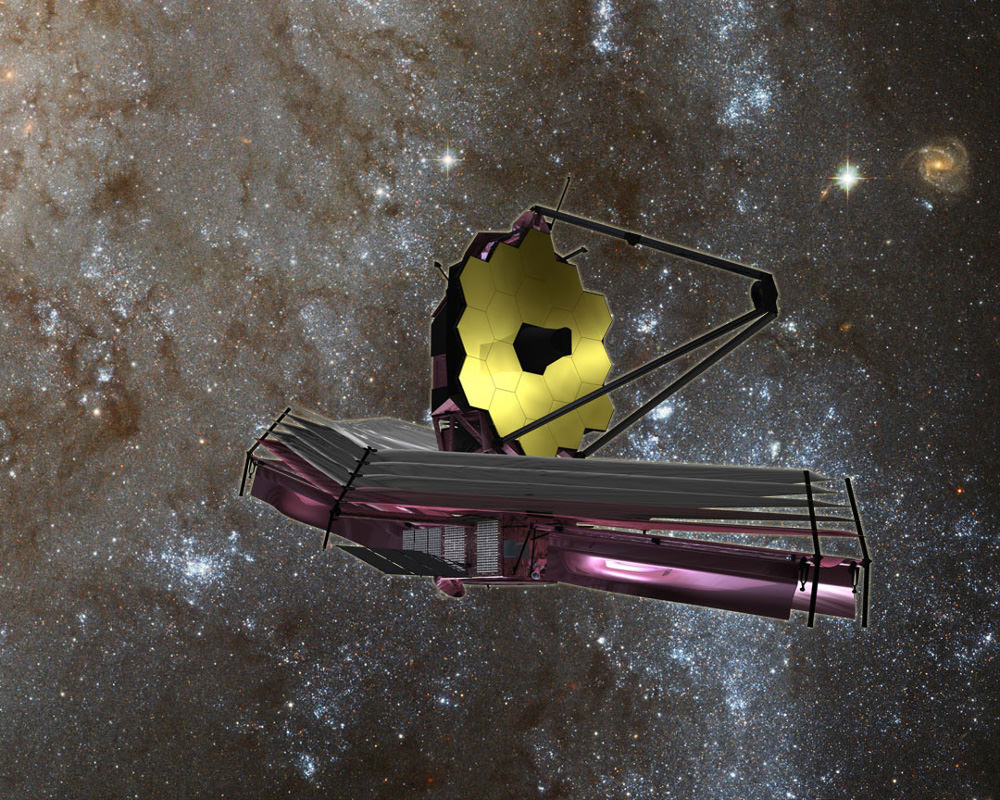
………….
Learn more about JWST, SLS, Orion, SpaceX, Orbital ATK Cygnus, ISS, ULA Atlas rocket, Boeing, Space Taxis, Mars rovers, Antares, NASA missions and more at Ken’s upcoming outreach events:
Dec 1 to 3: “Orbital ATK Atlas/Cygnus launch to the ISS, ULA, SpaceX, SLS, Orion, Commercial crew, Curiosity explores Mars, Pluto and more,” Kennedy Space Center Quality Inn, Titusville, FL, evenings
Dec 8: “America’s Human Path Back to Space and Mars with Orion, Starliner and Dragon.” Amateur Astronomers Assoc of Princeton, AAAP, Princeton University, Ivy Lane, Astrophysics Dept, Princeton, NJ; 7:30 PM.

I got curious about how the cruise to L2 will look for the JWST and found this: http://jwst.nasa.gov/images3/JWSTDeploymentSequence_v02122013.jpg
Apparently JWST’s trip to L2 will be a direct flight with final mirror deployment at day 14 and shortly thereafter entering a station keeping halo orbit at L2.
The biggest mirror ever orbited was the Hubble Space Telescope with a 8 ft diameter (2.4 meters) primary mirror. Right?
That shot of the mirror tripod assembly gives a real sense of how mightily big it is.